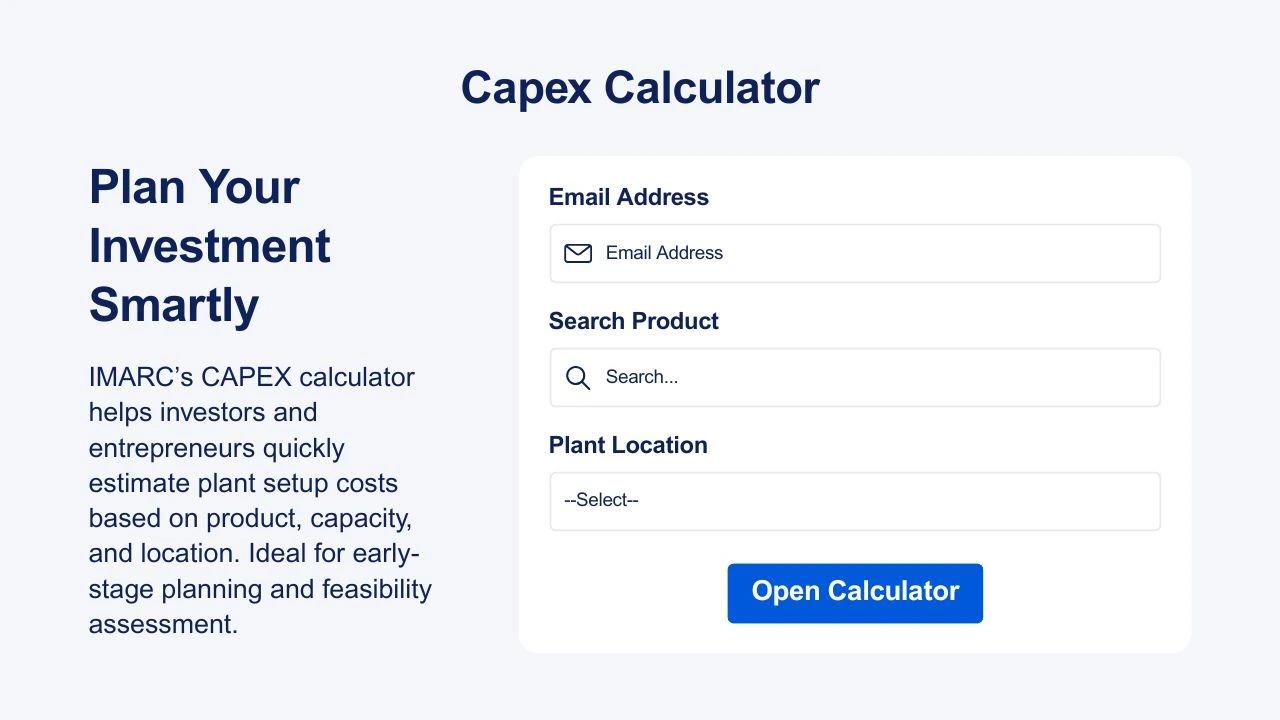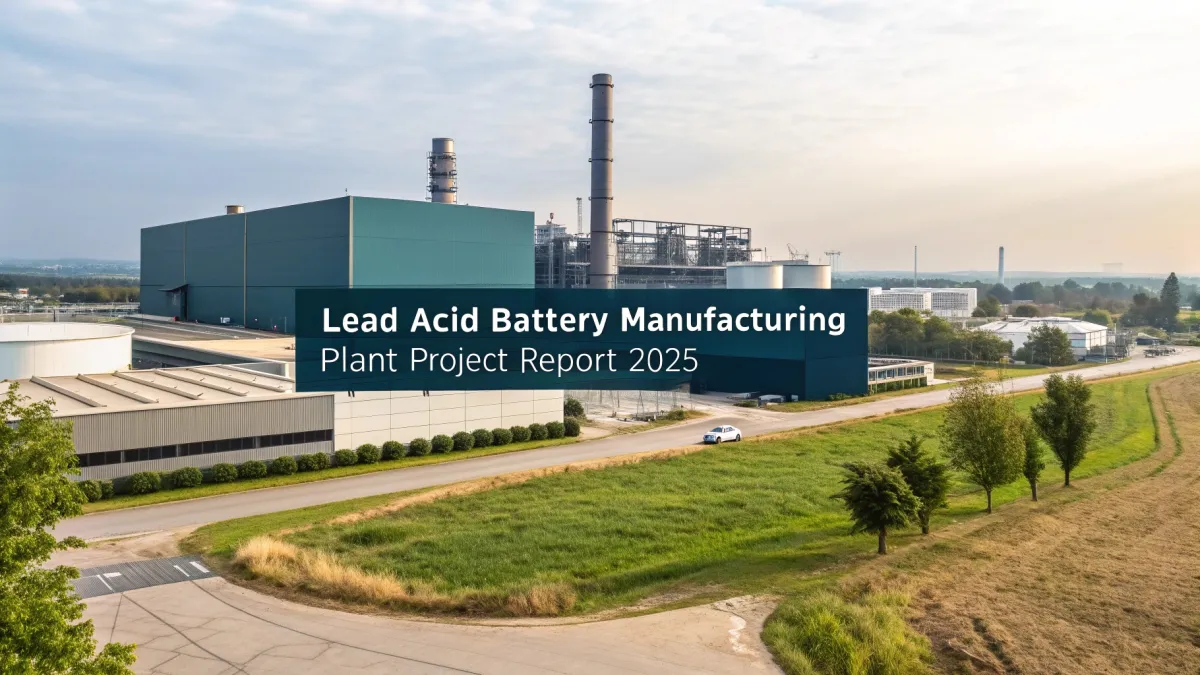
Lead Acid Battery Manufacturing Plant Report 2025: Raw Materials, Machinery And Investment Opportunities
Setting up a lead-acid battery manufacturing plant involves several complex processes. Key stages include grid casting (producing lead grids), paste mixing and application onto grids, curing and drying of plates, battery assembly (stacking plates with separators), electrolyte filling, and initial charging (formation). Crucial equipment includes melting furnaces, grid casting machines, paste mixers, pasting machines, curing chambers, assembly lines, formation rectifiers, and comprehensive testing equipment. Strict environmental controls for lead and acid handling are paramount.
Request for a Sample Report : https://www.imarcgroup.com/lead-acid-battery-manufacturing-plant-project-report/requestsample
IMARC Group's “Lead Acid Battery Manufacturing Plant Project Report 2025: Industry Trends, Plant Setup, Machinery, Raw Materials, Investment Opportunities, Cost and Revenue” offers a detailed and practical guide for entrepreneurs and businesses looking to enter the manufacturing industry. The report includes in-depth analysis of capital investment requirements, project financing options, working capital needs, and projected returns.
This comprehensive business plan outlines every critical step involved in setting up a successful manufacturing plant unit from understanding the industry landscape to planning for real-world challenges. It provides valuable insights into essential components such as lead acid battery manufacturing plant cost, machinery cost, operating cost, raw material requirements, utility needs, infrastructure setup, and packaging logistics.
Lead Acid Battery Industry Outlook 2025:
The lead-acid battery market in India is expected to show continued growth in 2025. This is primarily driven by sustained demand from the automotive sector for starter, lighting, and ignition (SLI) batteries, and from the UPS and inverter segments due to power fluctuations. The expanding telecommunications infrastructure and growing adoption of renewable energy systems for backup storage will also contribute to demand, leveraging their affordability and established recycling infrastructure.
Key Insights for Lead Acid Battery Manufacturing Plant Setup:
Detailed Process Flow:
-
Product Overview
Unit Operations Involved
Mass Balance and Raw Material Requirements
Quality Assurance Criteria
Technical Tests
Project Details, Requirements and Costs Involved:
-
Land, Location and Site Development
Plant Layout
Machinery Requirements and Costs
Raw Material Requirements and Costs
Packaging Requirements and Costs
Transportation Requirements and Costs
Utility Requirements and Costs
Human Resource Requirements and Costs
Capital Expenditure (CapEx) and Operational Expenditure (OpEx) Analysis:

Project Economics:
-
Capital Investments
Operating Costs
Expenditure Projections
Revenue Projections
Taxation and Depreciation
Profit Projections
Financial Analysis
Profitability Analysis:
-
Total Income
Total Expenditure
Gross Profit
Gross Margin
Net Profit
Net Margin
Request for Customization : https://www.imarcgroup.com/request?type=report&id=8557&flag=E
Key Cost Components of Setting Up a Lead Acid Battery Plant:
-
Land and Building Costs: Acquisition or lease of industrial land and construction of specialized factory buildings with sections for raw material handling, plate manufacturing, battery assembly, acid preparation, formation (charging), quality control, and hazardous waste management. Compliance with environmental and safety regulations will significantly influence building specifications.
Raw Material Procurement: Initial and ongoing costs for procuring high-purity lead (ingots, oxides), sulfuric acid, plastic battery casings, separators (PVC, AGM), terminals, and other additives.
Utility & Energy Costs: Significant operational expenses for electricity (for machinery, charging, HVAC), water (for processing, cooling), and fuel (for furnaces, heating).
Labor and Staffing Costs: Salaries for chemical engineers, metallurgists, skilled technicians, machine operators, quality control personnel, and maintenance staff, given the specialized nature of the manufacturing process.
Licenses, Certifications, and Regulatory Compliance: Fees for various industrial licenses, environmental clearances (from State Pollution Control Board), BIS (Bureau of Indian Standards) certification for batteries, and adherence to hazardous waste management rules.
Research & Development (R&D): Costs associated with developing new battery designs, improving performance, extending life cycles, and optimizing manufacturing processes.
Working Capital: Funds for initial raw material inventory (lead stock can be substantial), chemicals, operational expenses, utilities, and salaries before sales revenue stabilizes.
Economic Trends Influencing Lead Acid Battery Plant Setup Costs 2025 :
-
Automotive Sector Growth: The sustained growth in vehicle production and sales (two-wheelers, passenger vehicles, commercial vehicles) in India directly drives demand for SLI batteries, influencing investment decisions for new capacity.
UPS/Inverter Market Demand: Continued reliance on backup power solutions due to grid inconsistencies fuels demand, supporting the viability of new production units.
Lead Price Volatility: Global lead prices, influenced by mining output, recycling rates, and demand from various industries, significantly impact the raw material cost, which forms a large portion of battery production expenses.
Energy Costs: Rising industrial electricity tariffs in India directly increase operational expenses for energy-intensive processes like lead melting, plate formation, and battery charging.
“Make in India” Initiatives and Policy Support: Government focus on boosting domestic manufacturing and reducing import dependency might offer incentives, subsidies, or easier access to financing, potentially reducing the effective setup cost for new plants.
Recycling Infrastructure Development: A well-established and growing recycling infrastructure for lead-acid batteries can provide a more sustainable and potentially cost-effective source of secondary lead, influencing long-term raw material costs.
Competition from Advanced Battery Technologies: While lead-acid batteries remain cost-effective, the increasing penetration of lithium-ion batteries in certain applications (e.g., EVs, large-scale energy storage) could influence market dynamics and necessitate competitive pricing for lead-acid batteries.
Challenges and Considerations for Investors in Lead Acid Battery Plant Projects:
-
Environmental Regulations and Lead Handling: Strict environmental regulations regarding lead emissions, wastewater discharge (containing sulfuric acid), and hazardous waste management are paramount. Compliance requires significant investment in pollution control equipment and ongoing monitoring.
Raw Material Sourcing and Price Volatility: Ensuring a consistent supply of high-purity lead, which is a globally traded commodity, and managing its price fluctuations can be challenging, directly impacting profitability.
Competition and Market Saturation: The Indian lead-acid battery market has established players. New entrants face intense competition and need to differentiate through quality, specialized products, or efficient distribution.
Technological Advancement: While a mature technology, continuous R&D is required to improve efficiency, cycle life, energy density, and to comply with evolving performance standards.
Skilled Workforce: The manufacturing process requires a skilled workforce with expertise in electrochemistry, material science, and safety protocols for handling hazardous materials.
Recycling Infrastructure: While robust, ensuring compliance with recycling mandates for end-of-life batteries and managing the reverse logistics can be complex.
Safety Hazards: The handling of lead and sulfuric acid presents significant health and safety risks to workers, necessitating rigorous safety protocols and training.
Supply Chain Resilience: Building a resilient supply chain for critical raw materials and components, especially given global market dynamics, is a key consideration.
Conclusion:
The lead-acid battery manufacturing industry in India presents a stable and essential investment opportunity for 2025, driven by persistent demand from the automotive and backup power sectors. While setting up a plant requires significant capital investment, stringent environmental compliance for hazardous materials, and navigating raw material price volatility, the established market and ongoing need for cost-effective energy storage solutions offer a viable business proposition. Investors prioritizing environmental responsibility, technological optimization, and efficient supply chain management will be well-positioned for success.
About Us:
IMARC Group is a global management consulting firm that helps the world's most ambitious changemakers to create a lasting impact. The company excel in understanding its client's business priorities and delivering tailored solutions that drive meaningful outcomes. We provide a comprehensive suite of market entry and expansion services. Our offerings include thorough market assessment, feasibility studies, company incorporation assistance, factory setup support, regulatory approvals and licensing navigation, branding, marketing and sales strategies, competitive landscape, and benchmarking analyses, pricing and cost research, and procurement research.
Contact Us:
IMARC Group
134 N 4th St. Brooklyn, NY 11249, USA
Email:
Tel No:(D) +91 120 433 0800
United States: (+1-201971-6302 )
Legal Disclaimer:
MENAFN provides the
information “as is” without warranty of any kind. We do not accept
any responsibility or liability for the accuracy, content, images,
videos, licenses, completeness, legality, or reliability of the information
contained in this article. If you have any complaints or copyright
issues related to this article, kindly contact the provider above.


















Comments
No comment